Richard B. Jackson's South Park Photo Album
Richard B. Jackson's South Park Photo Album
|
This post was updated on .
We aren't looking at C&S photos near enough.
On another thread, Daniel shared a link to an album of Dick Jackson's photos of the C&S South Park division taken between 1929 and 1941: https://californiarevealed.org/islandora/object/cavpp%3A70851#page/1/mode/1up/search/Colorado%20%26%20Southern%20railroad. Chris Walker correctly noted that the majority of images were published in Mal Ferrell's book on the C&S. Looking through the photos, I discovered a fair number that I don't believe were ever published. And the familiar photos seemed to be better quality than those in books--clearer, uncropped and no gutter from the book binding running through the image. So I copied all that interested me and have them safely stored on my hard drive. I basically did screen grabs (ctrl-prt sc), pasted them into a photoshopping program and saved them as .jpg's. I then cropped off the Microsoft and host site's tool bars. I tried to keep all images full frame, as Mr. Jackson saw them through his camera view finder. The man did have a talent for photo composition! I did fiddle with the images to improve contrast, brightness and color temperature to my eye. Since I've got all these images safely stored, I thought that I would share them on this Forum for discussion. So let's take an imaginary trip from Denver to Leadville. Let's visit the South Park division in its last decade of operation, as seen through the eyes of Richard B. Jackson . . . Leaving Denver  August, 1929. Denver Union Station.  Early spring, 1937. Note the "hazard" placards on the last two boxcars. Sheridan Junction, MP 7.55  1937 Waterton Tank, about MP 21 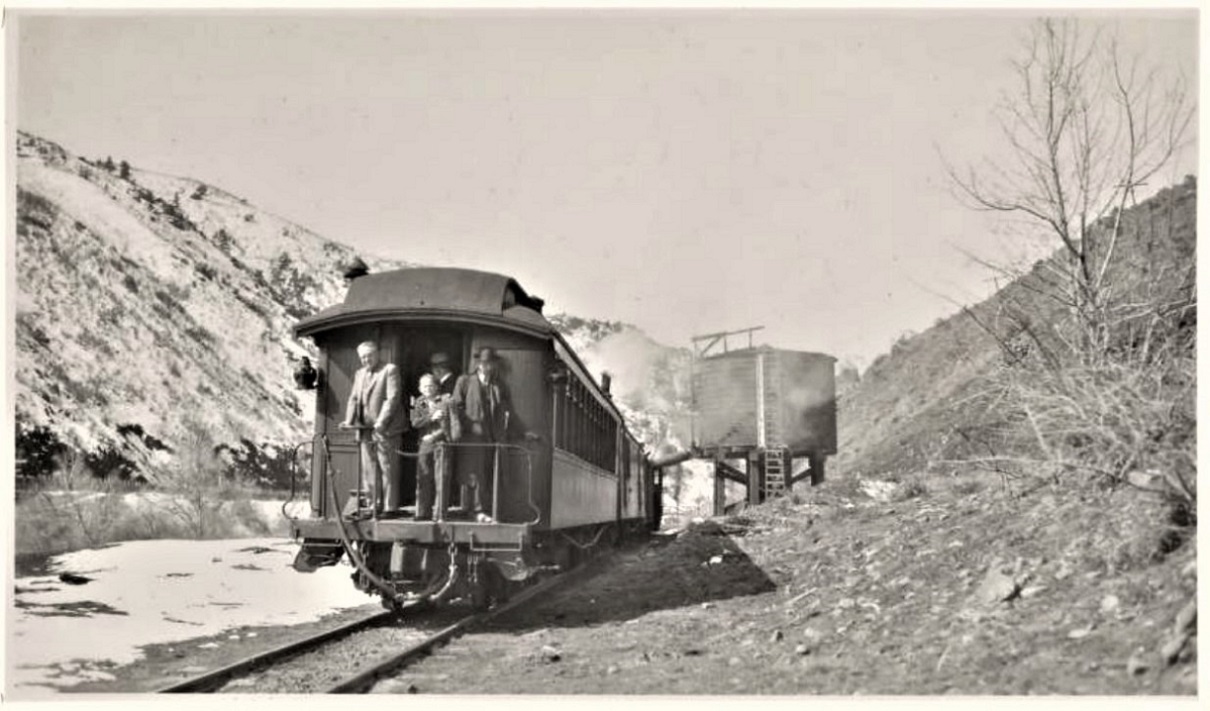 1937 Deansbury Bridge, about MP 27.00 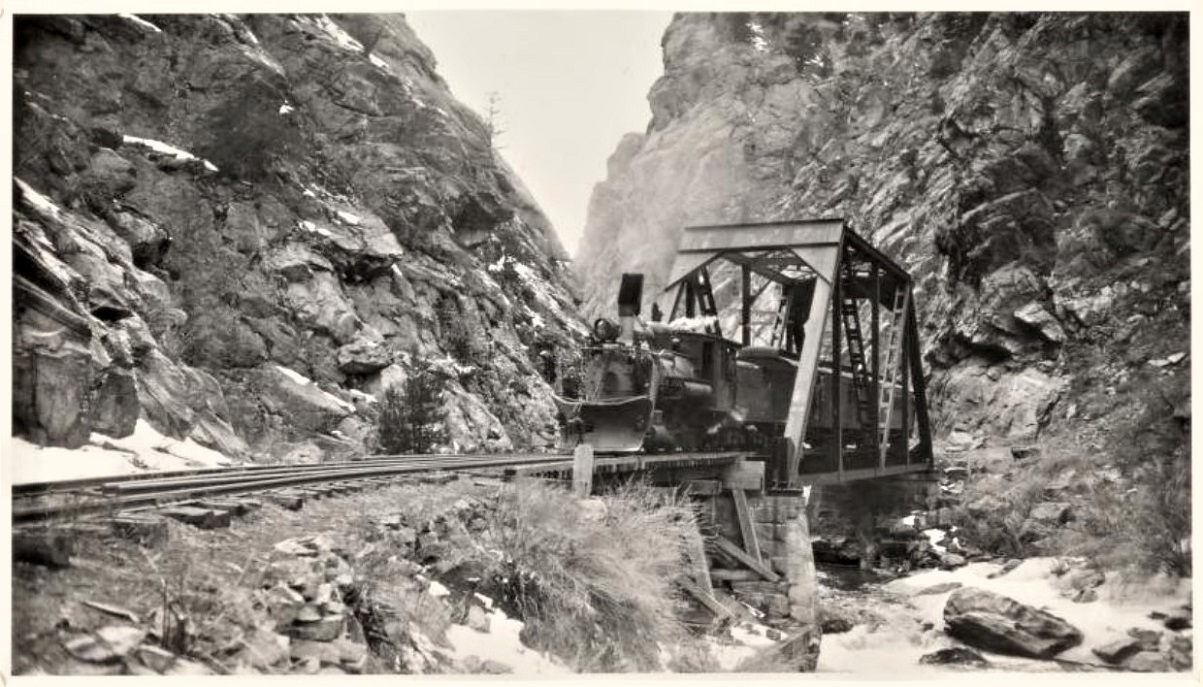 1936 Foxton, MP 36.01  1937 Buffalo, MP 39.57  1937 Bridges just beyond Buffalo: 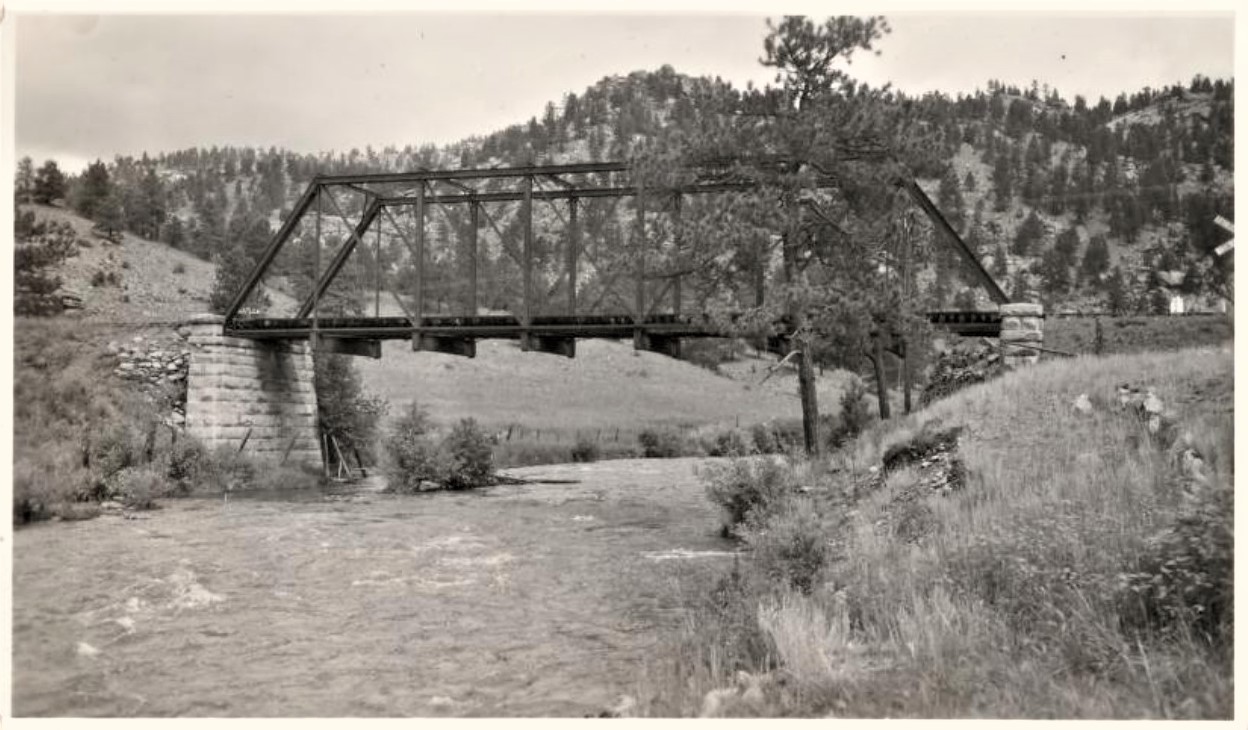 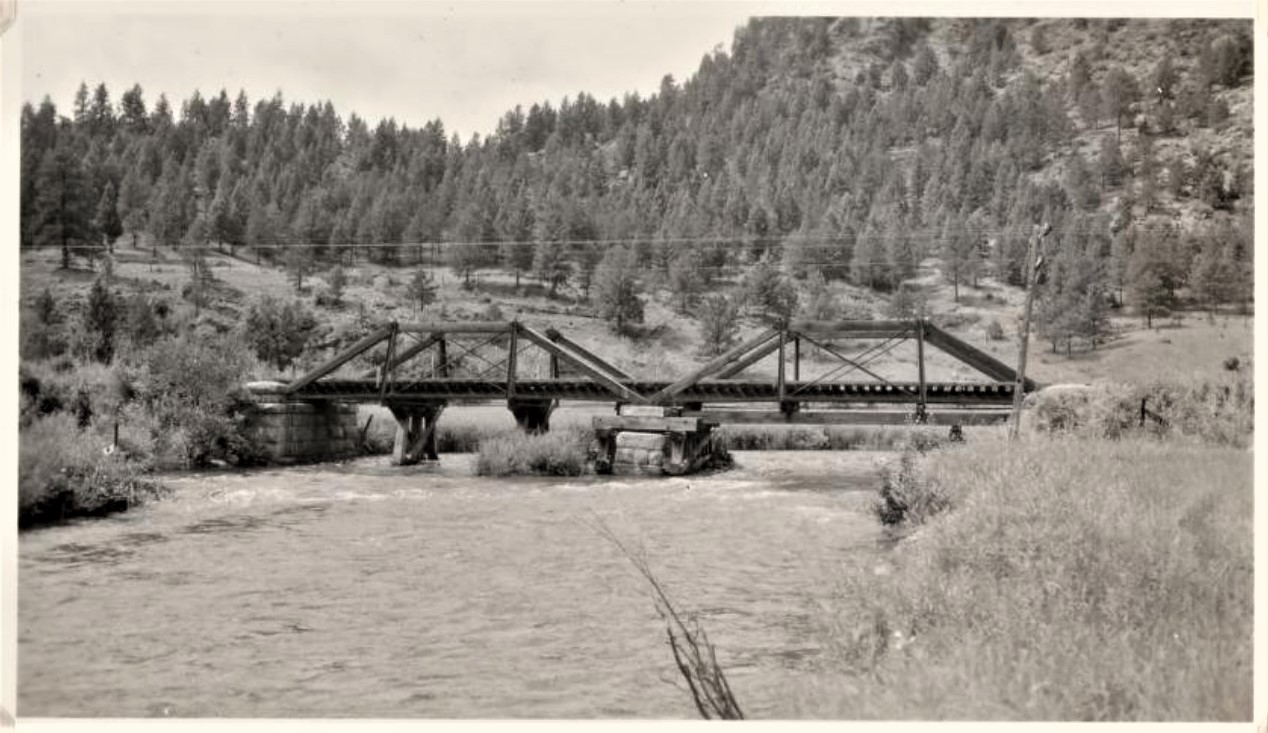 Pine. MP 42.39  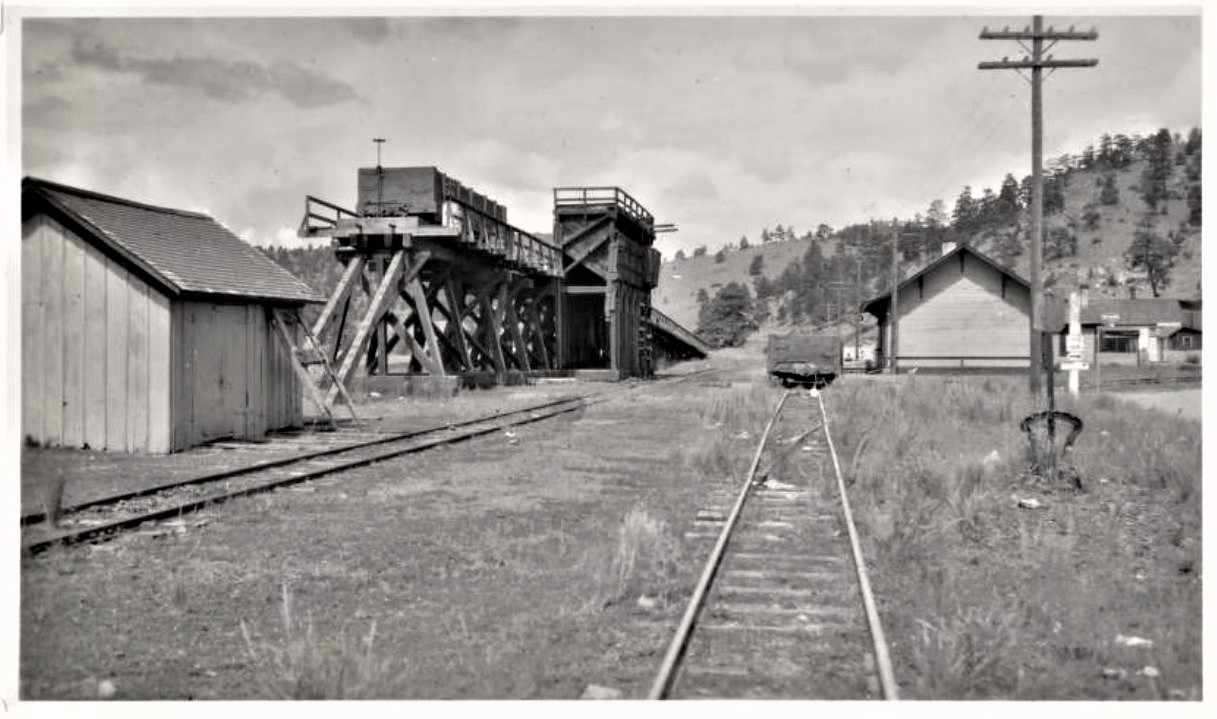 Both August, 1929  July, 1938 Crossons, MP 47.74  August, 1929 Estabrook Canon, MP ~49.7 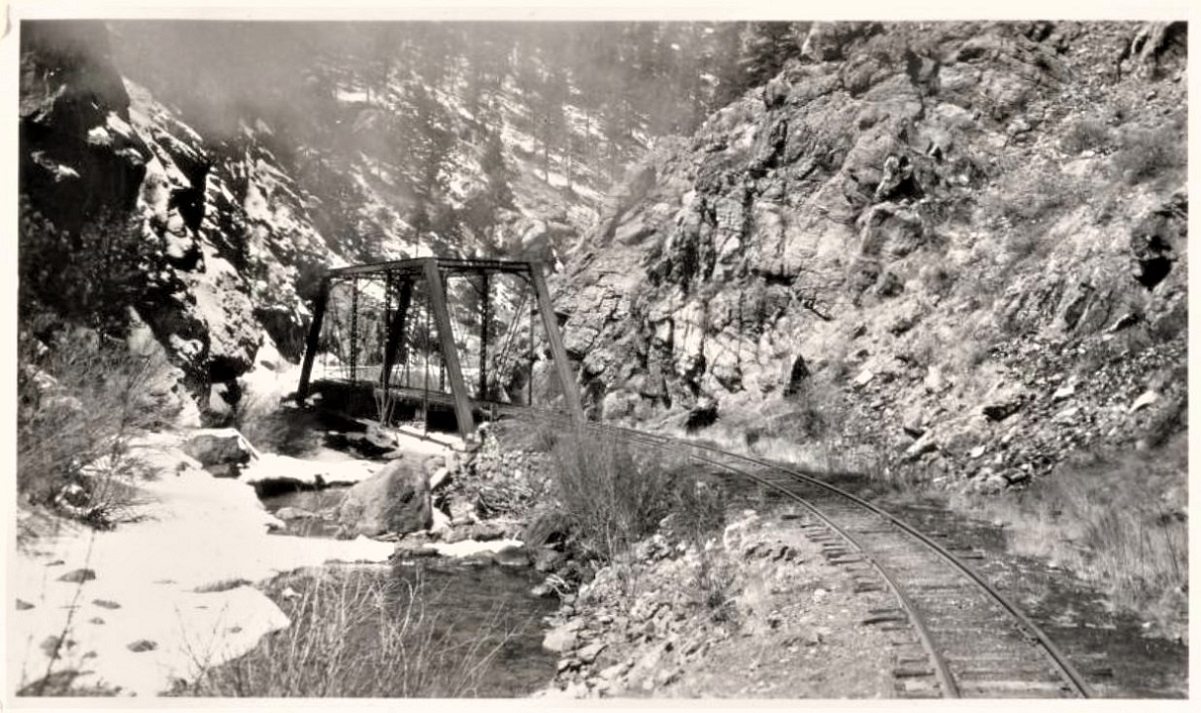 April, 1937. Beyond the bridge is the "horseshoe" curve, where C&S 75 turned over in 1922. Baileys, MP 56.19  Summer, 1932. A passenger extra filled with children traveling to summer camp at Santa Maria. Shawnee, MP 60.00. 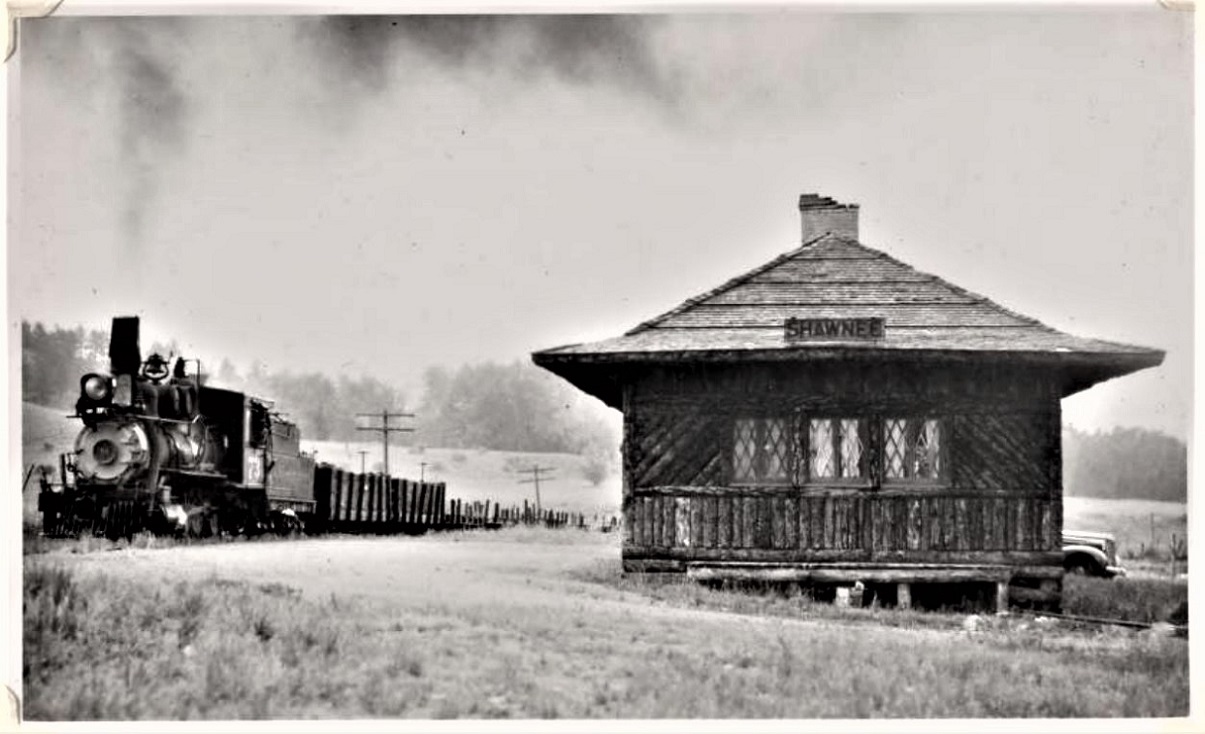 Summer, 1938. Long Meadow, MP 61.80  April, 1937. Last meet between eastbound passenger and westbound freight. Above Kline, MP 62.5-63.5  1932? Cassels (??), MP 64.50 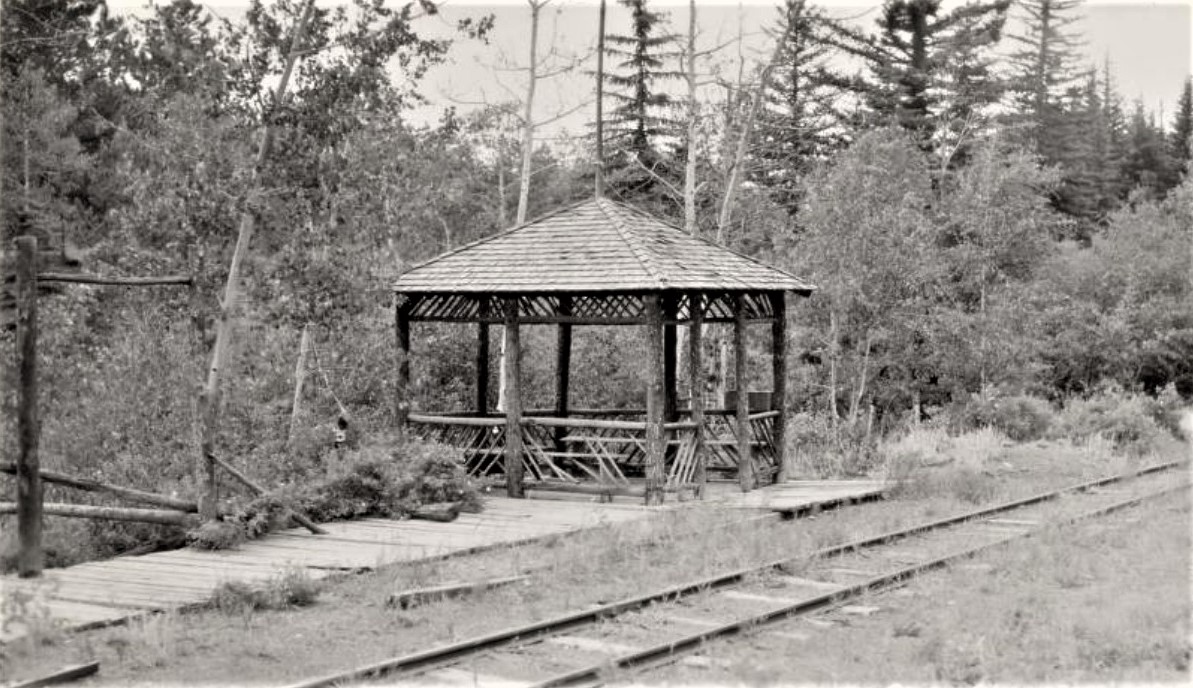 August, 1929. I believe that this is the small flag station for the hotel. Anyone know? Mr. Klinger?? Grant, MP 66.15  August, 1929. Webster, MP 69.37  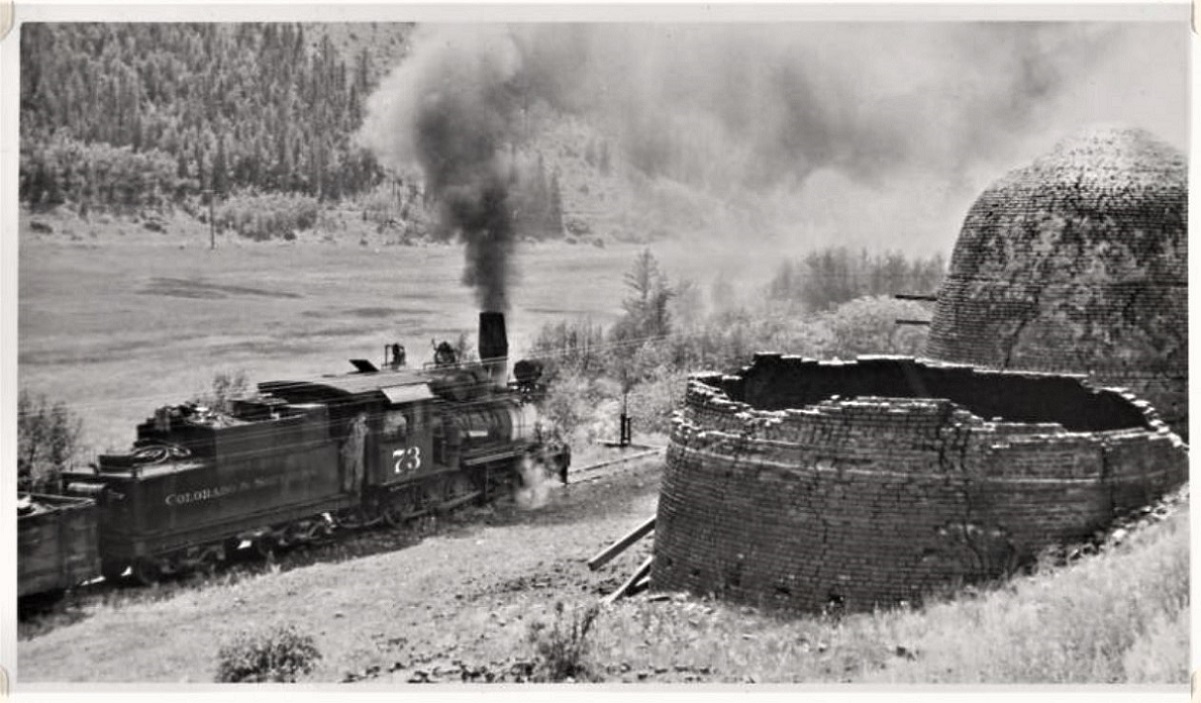 Summer, 1938. Climbing Kenosha, about MP 71  Summer, 1932. Hoosier, MP 73.83 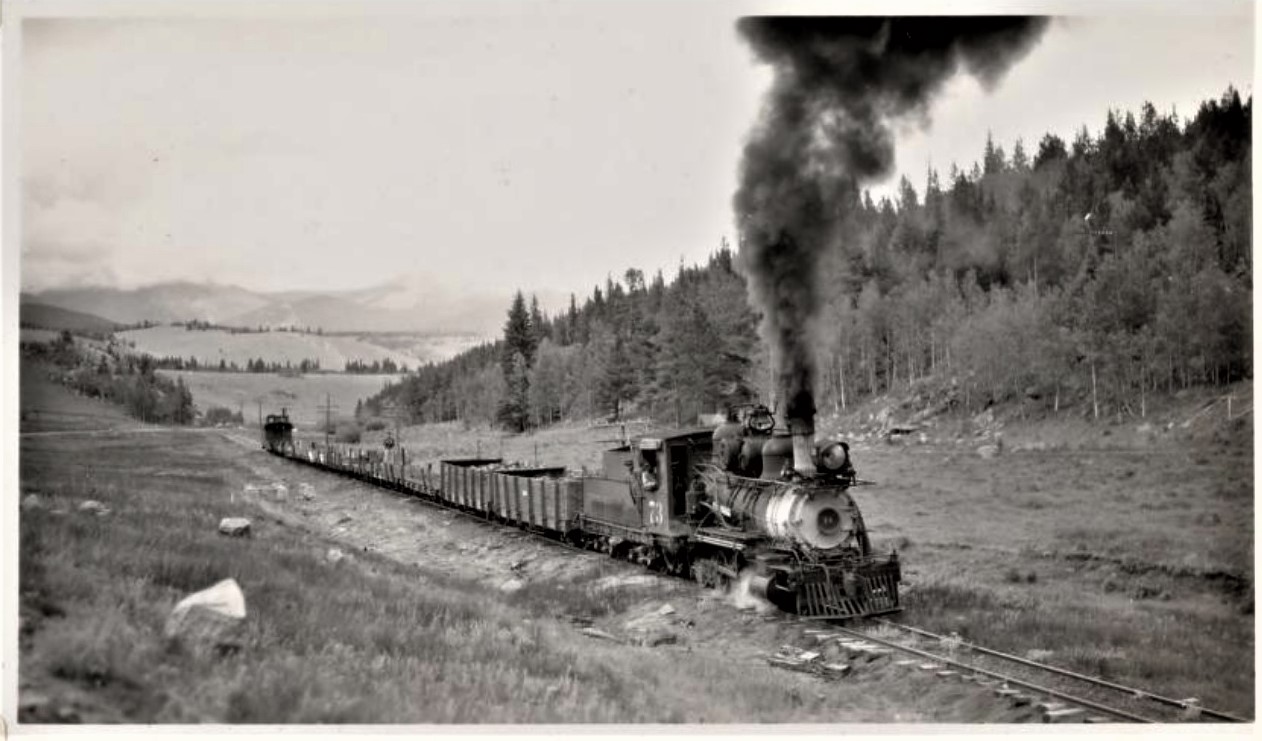 Summer, 1938. Kenosha, MP 76.19 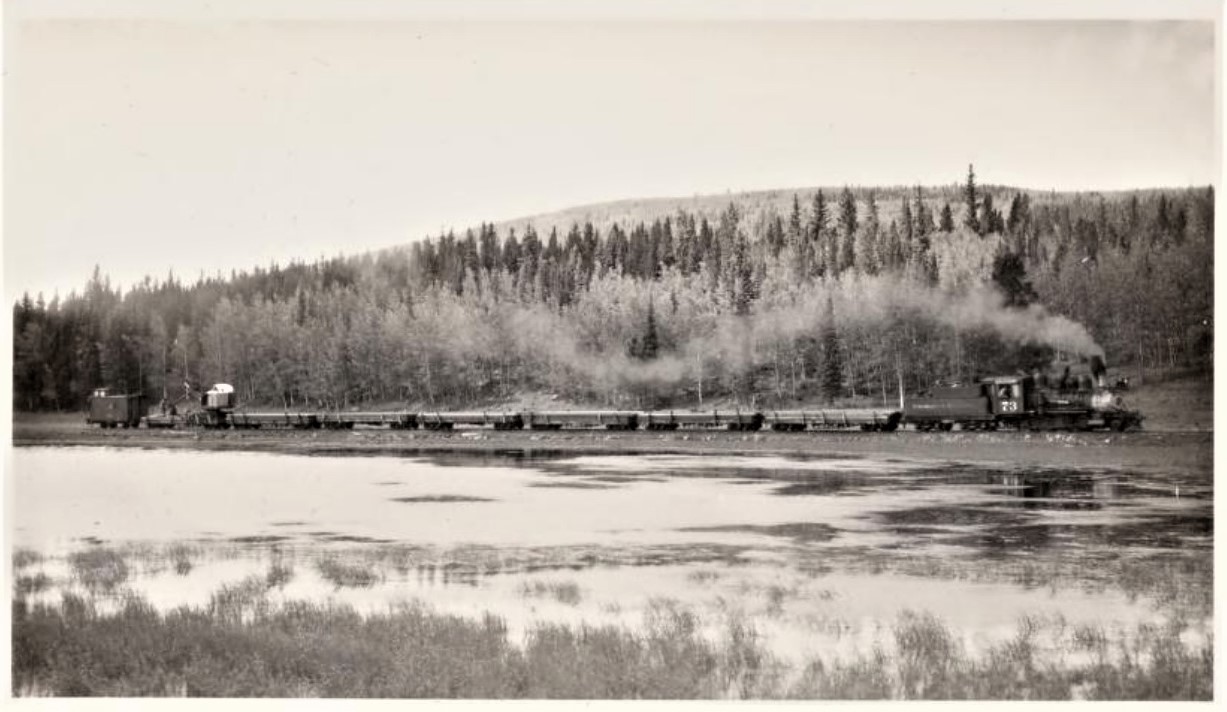 Kenosha Pond, Summer, 1938.  Eastbound, Kenosha Pass, Summer, 1932. Jefferson, MP 81.12  August, 1929. Como, MP 88.27  August, 1929.  Summer, 1936. Selkirk, MP 96.09  April, 1937. Boreas, MP 98.84  August, 1929.  April, 1937. Baker Tank, MP 102.16 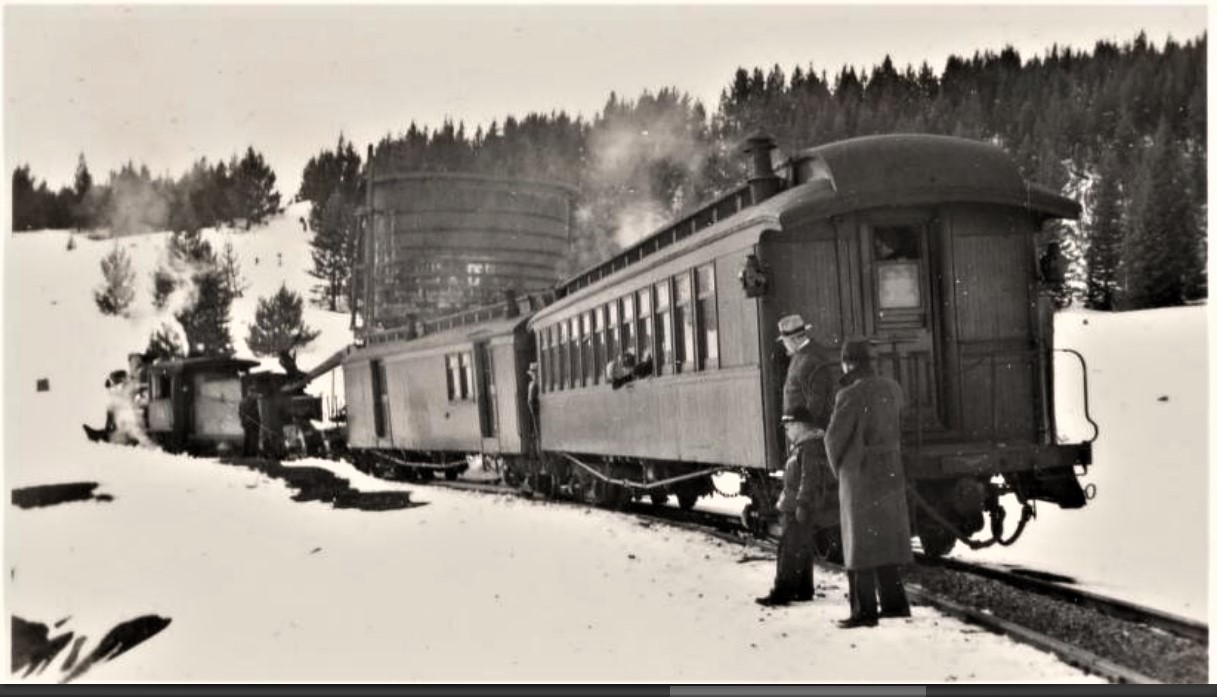 April, 1937. Breckenridge, MP 110.00  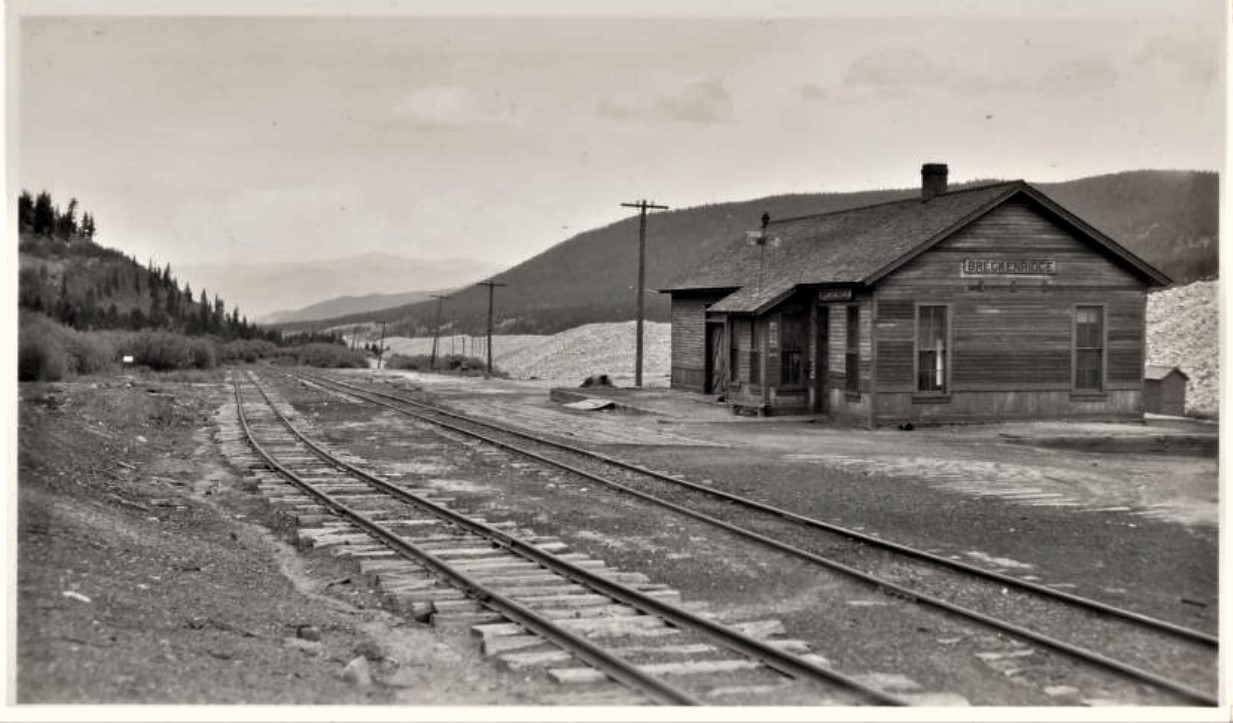  Summer, 1938. Dickey, MP 116.47 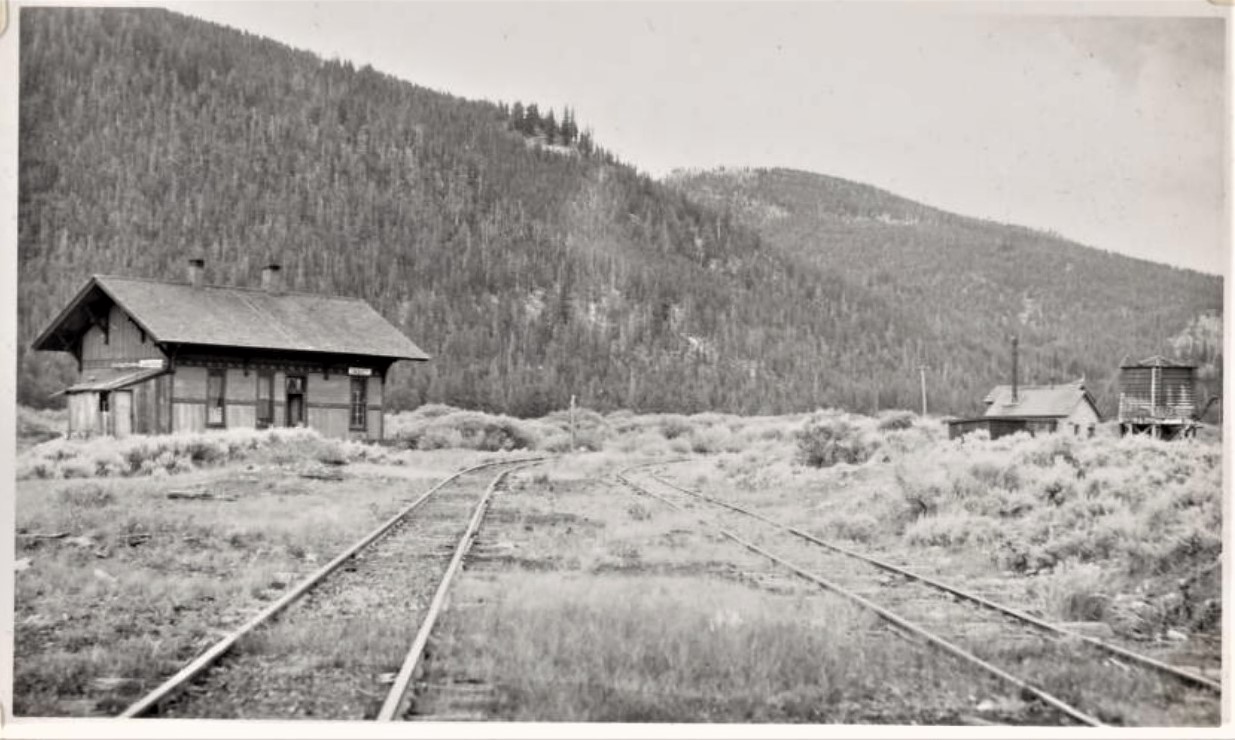 August, 1929. This photo is surprising, causes an anachronistic dilemma. The Dickey depot is still painted in the older light grey with green trim scheme from about 1915. But then there is this photo:  I've always assumed this to be a January, 1929, Denver Water Board photo, but the depot appears freshly painted red, seven months before Jackson's image in light grey. Mike Trent, do you know when the Dickey Depot was painted red?? Early 1930s?? Dillon, MP 119.17  August, 1929. One of my favorite C&S photographs!!  April, 1937. Last train to Denver.  April, 1937. Rear of last train and rarely photographed north end of the depot. Kokomo Tank, MP 131.97  April, 1937. The Jackson album has this location labled as Robinson Tank, but timetables show no water tanks between Kokomo and Climax. On other threads it was suggested that this was Solitude Tank, but there is no evidence of the siding or sheep pens. Kokomo, MP 132.67  August, 1929. Climax, MP 137.46. 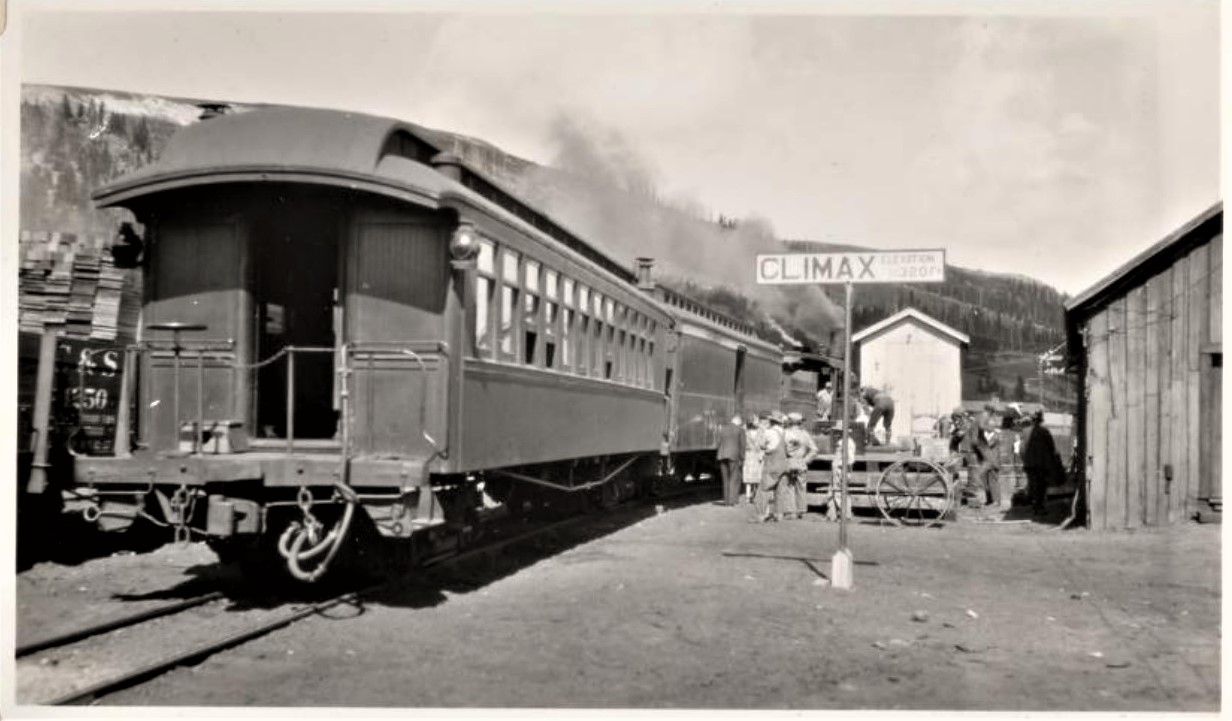 August, 1929  April, 1397, last train to Denver. Leadville, MP 151.19  1936 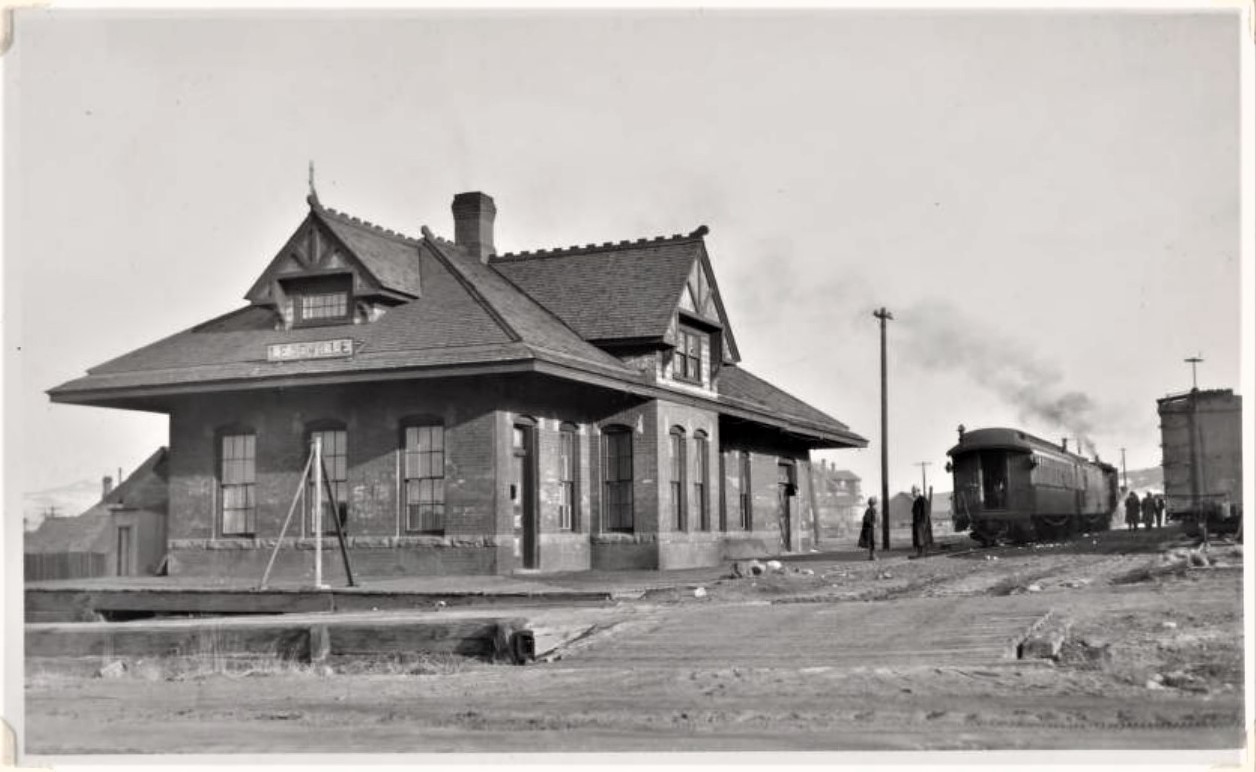 1937  1940 FINIS 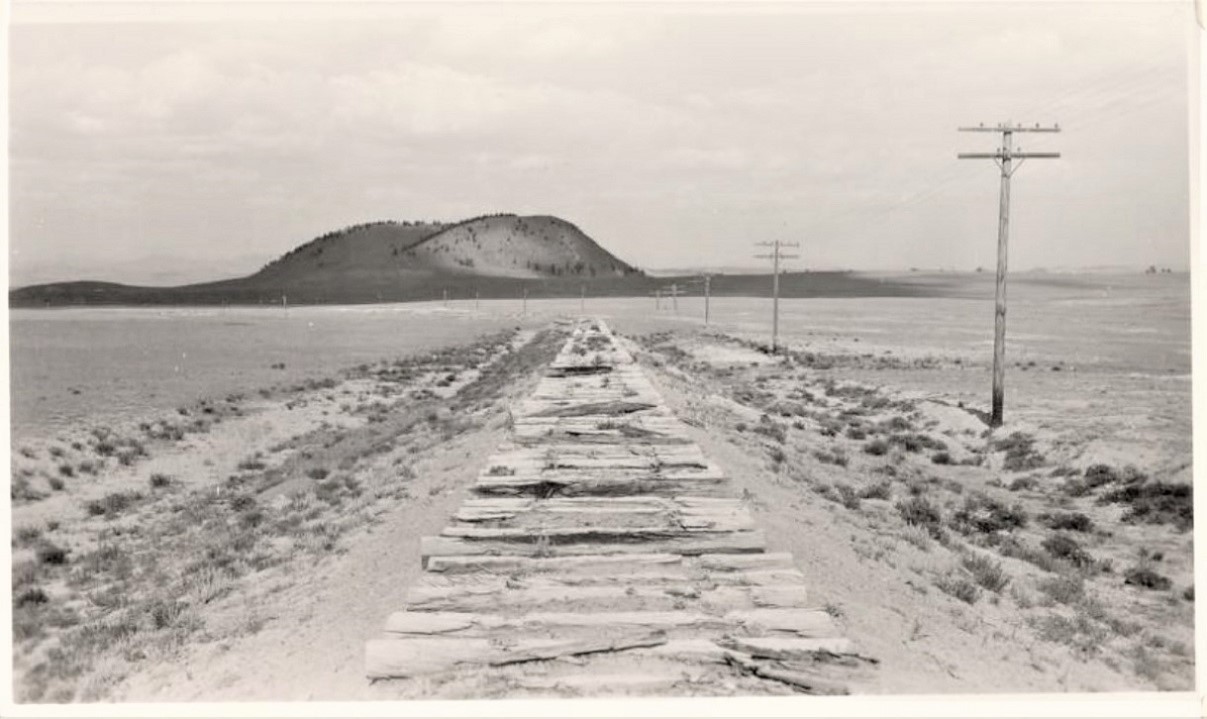 This one is for South Park . . .
Jim Courtney
Poulsbo, WA |
|
Jim,
Thanks for organizing these photos. Good thing you could not hear me when I saw these in the album yesterday as the words are not printable. Anyway, sure could have used several in our books! That station pavilion , oh boy! What about Weller or Singleton(Cline)? What a daddy. Speaking of Weller and Cline, the owners of the Buck Horne saloon up Elk Creek out of Pine Grove are decedents of the Weller and Cline founders. Tom Klinger |
Re: Richard B. Jackson's South Park Photo Album
|
In reply to this post by Jim Courtney
Goodness! What a find!
|
Re: Richard B. Jackson's South Park Photo Album
|
In reply to this post by Southpark
Hey Tom,
I can't figure out where that neat little flag station was located! The negative number suggests that it is between Shawnee and Grant. It doesn't match the structures in the McClure photos of Kline/Singleton, or Weller. A distant view of the wait station at Cassalls (in your book) seems to have a different roof shape. Nor does it match any similar structures from Insmont to Shawnee. Perhaps it replaced an earlier structure. Still a mystery to me. I'm still adding a few more photos to the original post. I'm trying to confirm dates of some photos. Evidently Mr. Jackson road the passenger to Leadville and back twice, in August, 1929, and on the last trains in April, of 1937. Other photos that were dated in the album indicate photo trips up Platte Canon, perhaps to Como, in the summers of 1932, 1935 and 1936. He also recorded the dismantling trains in the summer of 1938.
Jim Courtney
Poulsbo, WA |
Re: Richard B. Jackson's South Park Photo Album
|
In reply to this post by Jim Courtney
There are several Jackson albums in this online collection, two with C&S and earlier material. The actual collection is at CSRM and they've made copy negs of a good number of these images--I've seen all the Nevada Central photos of Jackson's in person at that library, but not the album itself.
The other people's albums include vacations rides on various Colorado lines, including a family trip in 1907 that rode up Royal Gorge and also on the Moffet Road. One is dedicated to Tonopah. There is a scrap book by a railfan full of SPng and Carson & Colorado photos, articles and papers. I burned a few hours working through the hundred-plus albums and had a great time digging. Now it's time to screen-grab the pages of interest.
Dave Eggleston
Seattle, WA |
|
In reply to this post by Southpark
Jim,
My error in the spelling of "Cline" should be Kline. With that, the image shown just after Foxton of the freight looks to be just west of Kline before Weller. For those out side of the area the meadow today at Long Meadow has changed as the Denver Water Board took out the curves in the North Fork of the Platte back in the 1960's. The women on the rear of the coach of the east bound train at Long Meadow are some of the young folks from Como going as far as Bailey. Several of those girls show up in the photos of the Ford T on Boreas and around Como. Still looking for the "famed" Trout Creek Pass image of a DSP&P and CM train! Tom Klinger |
|
Howard Fogg
Post #6 says,"SFAIK, no photos exist of a train on either railroad at the summit of Trout Creek Pass. Here's a portion of Howard Fogg's 1965 painting for Morris Cafky's book 'COLORADO MIDLAND' that depicts a "meet" at the summit in the Autumn of 1890, not too long after the CM was completed:" Guess you have to keep looking. Chuck |
|
Hi all,
while I was working through all of these wonderful pics I found that I could get copies in a higher solution (4MB) by zooming in the original album pic and then saving a copy on my PC desk. Good for getting all the details... 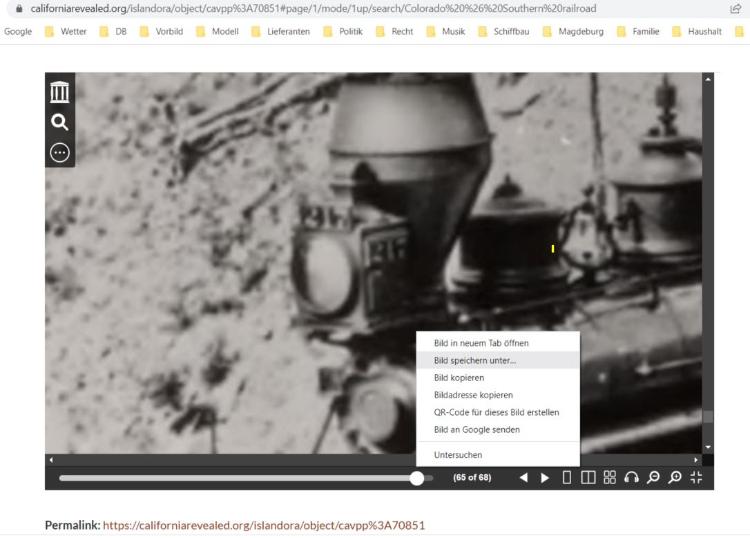 I am not an C&S expert yet, therefore allow these questions: Does anyone know on which tracks in the Denver yard they built up the south park freight trains?  And what was the track configuration in Gunnison in final years? I expected a main track but no switches... Are these white blocks on background the water tank foundations? 
Regards, Steffen
|
Re: Richard B. Jackson's South Park Photo Album
|
Steffen,
The track arrangement at Gunnison was remarkably like that in 1882, with some minor changes. Those white "blocks" are the remaining stumps of the roundhouse walls around each door opening. Here is how it was found by the ICC in their 1918 survey of the property, the South Park's facilities centered around the wye on the left, with the D&RGW line to Crested Butte up the middle with interchange with the C&S track. Gunnison proved a bust for the railroads very early on, with expected boom traffic fizzling by 1884. Jackson was standing across the track from the little hand, looking south towards the roundhouse and wye. Track to Baldwin heads north from the wye, mainline to the tunnel to the right from the wye. 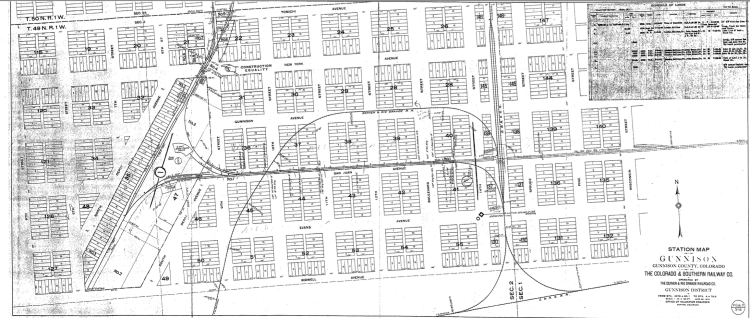  You can purchase the Gunnison Division ICC maps from the Colorado Railroad Museum. The C&S stopped using Gunnison in 1911, trading the operations of the Baldwin - Gunnison - Pitkin trackage to the D&RGW while taking over the ops on the D&RGW Blue River track east out of Leadville to Kokomo and beyond. But from 1882 to 1910, the South Park, UPD&G and C&S ran through the yard that looked almost identical to this post-C&S operations map. Traffic was primarily coal westbound, empties eastbound from the mid-1880s to the end, except during the extended (up to 8 months some years) closures of Alpine Tunnel when traffic became a trickle of every-other-day mixed trains to Pitkin or Baldwin. When coal was mined during those tunnel closure periods (the mines often closed in winter) the coal traffic would flow over Marshall Pass on the D&RG. The D&RGW operated the ex-C&S (South Park) trackage from Gunnison to Baldwin into the 1940s to access the coal mines. The light bridges forced the use of small D&RGW 2-8-0s in the Gunnison area. The D&RGW let the South Park roundhouse decay to ruin, the station was a section house, possibly a private residence at times, and didn't use much of the South Park track besides the main as it had no need for the C&S facilities.
Dave Eggleston
Seattle, WA |
Re: Richard B. Jackson's South Park Photo Album
|
In reply to this post by Southpark
Hey Tom,
I relocated the photo of C&S 74 and train to above Long Meadow, per your info. From my memory of last driving up to Kenosha in 2019, the scenery in that area seems to fit better. I've also added a few more photos. Could you please confirm the photo of the bridge in Estabrook Canon is correct?
Jim Courtney
Poulsbo, WA |
|
Jim,
Estabrook Canon bridge is correct. I am surprised he missed the depot at Estabrook. Maybe it is some place else in the collections. Tom Klinger |
|
In reply to this post by Dave Eggleston
Dave, thank you very much for your informations, very interesting.
Regards, Steffen
|
Re: Richard B. Jackson's South Park Photo Album
|
No problem Steffen.
The switch stand seen in the photo is for the north end of the passing siding on the east side of the wye. At one time there was a frame freight house close to the north end of that siding.
Dave Eggleston
Seattle, WA |
Re: Richard B. Jackson's South Park Photo Album
|
Administrator
|
In reply to this post by Jim Courtney
Jim, The picture at Dickey with the station in the great/green paint may have been August 1929. The neglect is pretty surprising. The paint is not the only discrepancy from the second picture. There is a shed attached to the also rarely photographed North end, and it looks like it has been there for a long time. Also, both chimneys are intact.
In the second picture, most of the brush has been cleared from the scene, the shed is gone, and the top of the North chimney is missing. So the B&B crew has been there sprucing things up pretty recently. it also appears to me that the ties are in much better condition. My guess would be that the second picture would have been taken in or shortly after 1930. As it was taken from the rear of the Passenger train, it could have come from a number of sources. I think in both pictures the ticket office has been closed which occurred as I recall, in about 1927. The train register box on the South end continued to be used. The picture labeled as the Kokomo tank is absolutely, positively, Solitude. No question about it. Compare it to the excellent picture taken by Brownie Anderson 7/4/1937 of #74 and #76 on a cleanup train Westbound found on page 432 of the Pictorial Supplement. The leaning post and the telegraph lines are as good as fingerprints if the topography doesn't convince you. On the same page, there is also a westward looking view which may or may not show sheep pens. |
Re: Richard B. Jackson's South Park Photo Album
|
Thanks Mike for bringing that up again.....
I had made that observation a few years ago, in the Kokomo thread.... http://c-sng-discussion-forum.254.s1.nabble.com/Kokomo-tp1652p9962.html Note: I have changed the link(Jim's) in my reply back then to the newer version of this Forum, to avoid confusion by a dead link.
UpSideDownC
in New Zealand |
Re: Richard B. Jackson's South Park Photo Album
|
Administrator
|
This post was updated on .
In reply to this post by Jim Courtney
Thanks, Chris. And thanks Jim for the work you did to capture and share these great pictures.
In the picture titled "Above Klein", #74 and it's train are paused out on the line while the engineer is working on something on the pilot. I believe he is probably pushing the lever which raises and lowers the pilot flanger. On #74 there was a small air cylinder under the running board behind the air pump which was connected to a long rod that ran under the stepped running board behind the air pump. The front of the rod was connected to the pilot flanger lever. At the rear of the rod there was a hook where the rod could be secured by a link secured to a hook on the top of the rear running board. The link may have come loose or the hook has broken or there was an air leak which has allowed the flanger to lower. It appears to me the engineer is pushing the lever raising the flanger so that some one out of view in front of the cab can somehow secure the rod. The slot for the arm that connected to the small cylinder can still be viewed on #74's rear running board behind the air pump. I have seen a picture taken from #74's engineer's seat which shows this link. I'll see if I can find it. I remember referring to that picture when I rebuilt my #74 in 1980, and confirmed what I saw on #74 in the Park in Boulder. The base of the hook is also there, the hook broken off. #75 and #76's lift cylinders were located more conventionally in front of the right side air tank under the long running board. I know, "usless information", but interesting. At least to me, and probably Chris. But I think this solves the mystery of the picture. Just another unique aspect of #74's Walschaerts valve gear. |
Re: Richard B. Jackson's South Park Photo Album
|
Administrator
|
This post was updated on .
In reply to this post by Jim Courtney
A comment on the picture of the last trains meeting at Long Meadow. The last day of regular operations on the Mainline between Denver and Leadville was Saturday, April 10th, 1937. Being a Saturday, the Passenger train would be running Eastbound and the "Regular" Extra Freight would also be running Eastbound out of Como. Train Days in Como, when freights arrived from both Leadville on the West End, and Denver, on the East End arrived in Como on Mondays, Wednesdays, and Fridays. The Passenger Train ran Westbound on Monday, Wednesday, and Friday, Eastbound on Tuesday, Thursday and Saturday. So normally, the Passenger Train ran Westbound on the same days as Westbound Freights on the East End and against Eastbound Freights on the West End. So the opposite was true on Tuesday, Thursday and Saturday. The Eastbound Passenger ran opposite the Westbound Freight out of Como, and followed the Eastbound Freight to Denver on the East End. So a meet of this kind at Long Meadow would be unusual. The helper on the Westbound Freight in the picture is probably #69, as it appears to have a brass number plate. This Extra probably has consigned freight that was over tonnage for the previous Westbound Extra which ran on Friday.
So it would be misleading to think that the Passenger train would regularly meet a freight extra like this on the East End. They would normally meet on the West End every day, as the Eastbound Freights out of Leadville were much slower due to switching operations toward Como on Monday, Wednesday and Friday, and would also meet on the West End on Tuesday, Thursday and Saturday because the Passenger left from Leadville and the Freight left out of Como. The picture definitely shows the Passenger Eastbound and the Extra Freight Westbound because the freight engines are double headed. I'm sure this was April 10th, the last day. There would have had to be some cleanup to do out on the West End afterward. |
|
In reply to this post by Southpark
I am replying to post of sometime back on the Richard Jackson C&S photos. The question was/is a wait station photo. I just realized that a photo I made use of in our Platte Canon Memories book at Kline, page 174, shows a portion of a wait station. This photo has a "Kline" sigh ID. The construction of the wait station in question of Jackson's photo collection is of an entirely different construction. Any ideas? Any chance there is a number sequence to his collection as to the order the film was exposed?
Tom Klinger |
Re: Richard B. Jackson's South Park Photo Album
|
Tom,
His photo albums are held by the California State Railroad Museum. You may wish to reach out to their archivist at their Sacramento library and see if they have more details on your question.
Dave Eggleston
Seattle, WA |
«
Return to C&Sng Discussion Forum
|
1 view|%1 views
| Free forum by Nabble | Edit this page |

